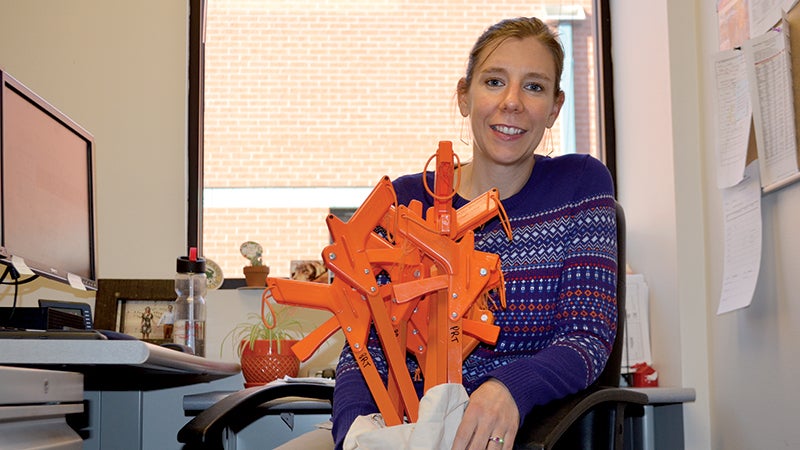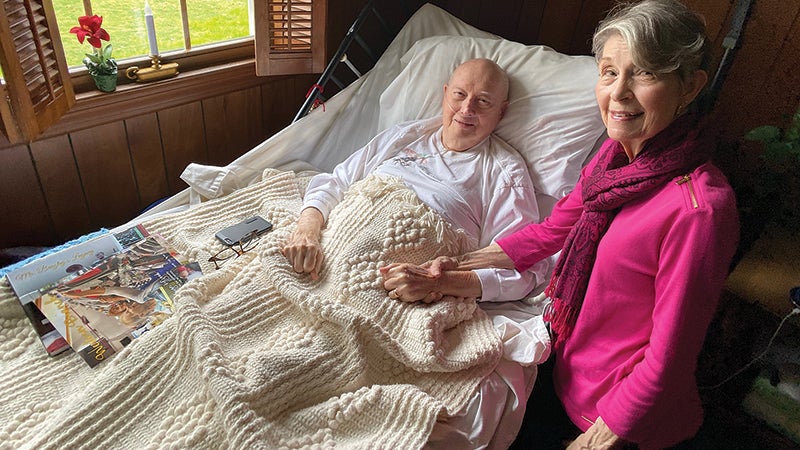The work continues for Chesapeake’s greenery
Published 3:01 pm Wednesday, January 9, 2019

- Megan Hale
Making sure that Chesapeake is a beautiful place to live is a year-long job of cleanups and classroom learning, all overseen by the Chesapeake Environmental Improvement Council.
The council was formed in 1983 by then-Mayor Sidney Oman. There are records, however, from 1978 that CEIC was formerly known as the Litter Control Council under former Mayor Marian P. Whitehurst, according to Megan Hale, recreation specialist with Chesapeake Department of Parks, Recreation and Tourism.
The name may have changed over the years, but for the 18 appointed volunteers on the governing board, the mission remains the same. Their goal is to promote litter prevention, recycling and beautification by providing citizens with opportunities to get involved at the grassroots level.
Thousands of other volunteers are actively involved in CEIC projects and sub-committees, according to Hale, and citizens actively volunteer through Keep Chesapeake Beautiful. As of late November of this fiscal year — July 1, 2018, to June 30, 2019 — more than $17,000 has been given back to the city through cleanup programs at roughly $26.75 for each volunteer hour, Hale said.
“That’s volunteer value that’s given back to the community for free,” said Hale, who acts as a liaison between CEIC and Keep Chesapeake Beautiful activities.
On Sept. 8, one of five annual Chesapeake Recycles Day collection events was held at Sam’s Club Western Branch, where six organizations helped process roughly 275 cars’ worth of recyclable material.
In just three hours on a Saturday morning, 420 pounds of recyclables were collected by TFC Recycling, 5,500 pounds of sensitive documents disposed of by Iron Mountain Shredding, 3,900 pounds of electronics and similar solid waste collected by Southeastern Public Service Authority and Goodwill, the latter of which collected 2,400 pounds of unwanted clothes on top of that.
“They’re very well attended,” Hale said. “We have a constant stream of cars during those three hours, and they’re really volunteer-run.”
Contests are also held throughout the year to encourage citizen participation in this green-positive movement. CEIC recognizes beautiful yards and gardens maintained by homeowners through Chesapeake’s Notable Yards Contest, in which citizens nominate their own or their neighbors’ wonderful green spaces.
A certificate is presented to the winners, one from each high school district in Chesapeake. A sign is placed in their yards for a month for posterity, and they each receive a $50 gift certificate to White’s Old Mill Garden Center on Old Mill Road. Western Branch resident Lisa Baker won this year for her lush green yard on Georgia Road.
CEIC is focused on fostering green thumbs at a young age and pushes for programs in schools, along with including more creative opportunities for children.
The Western Branch Middle School Art Club won the Youth Community Organization Award in 2017 for an innovative recycling and beautification project. Students took worn and dilapidated park benches from the Chesapeake Arboretum. These were then disassembled, stripped, cleaned and refinished.
Reassembled and ready for painting, each bench was made into beautiful works of art by the students in a project that recycled, repurposed and beautified.
“It’s about looking at the different styles of learning and presenting it in a different way,” Hale said about environmentally-conscious programs like at WBMS.
Hale has spent more than a decade in her field doing education, outreach and hundreds upon hundreds of litter cleanups. Her office is filled with binders for various CEIC-backed projects and notes on upcoming cleanups.
Looking for trash in parks and by the side of the road is an eye-opening experience, she said.
“For several days after, you can’t not see trash on the ground,” she said. “But when we don’t engage, it’s like a blind eye. You just never see it in the first place.”
According to CEIC Chair Alden Cleanthes, the council’s plan for 2019 is to expand its educational outreach and listen to feedback from citizens on what changes they’d like to see in their city. There’s also an urban forestry pilot program in the works.
Cleanthes said she was “amazed” by the volunteer work accomplished this year. But this is a marathon, not a sprint for CEIC.
“Until our environment is sustainable and resilient on its own, there’s still more work to be done,” she said.






